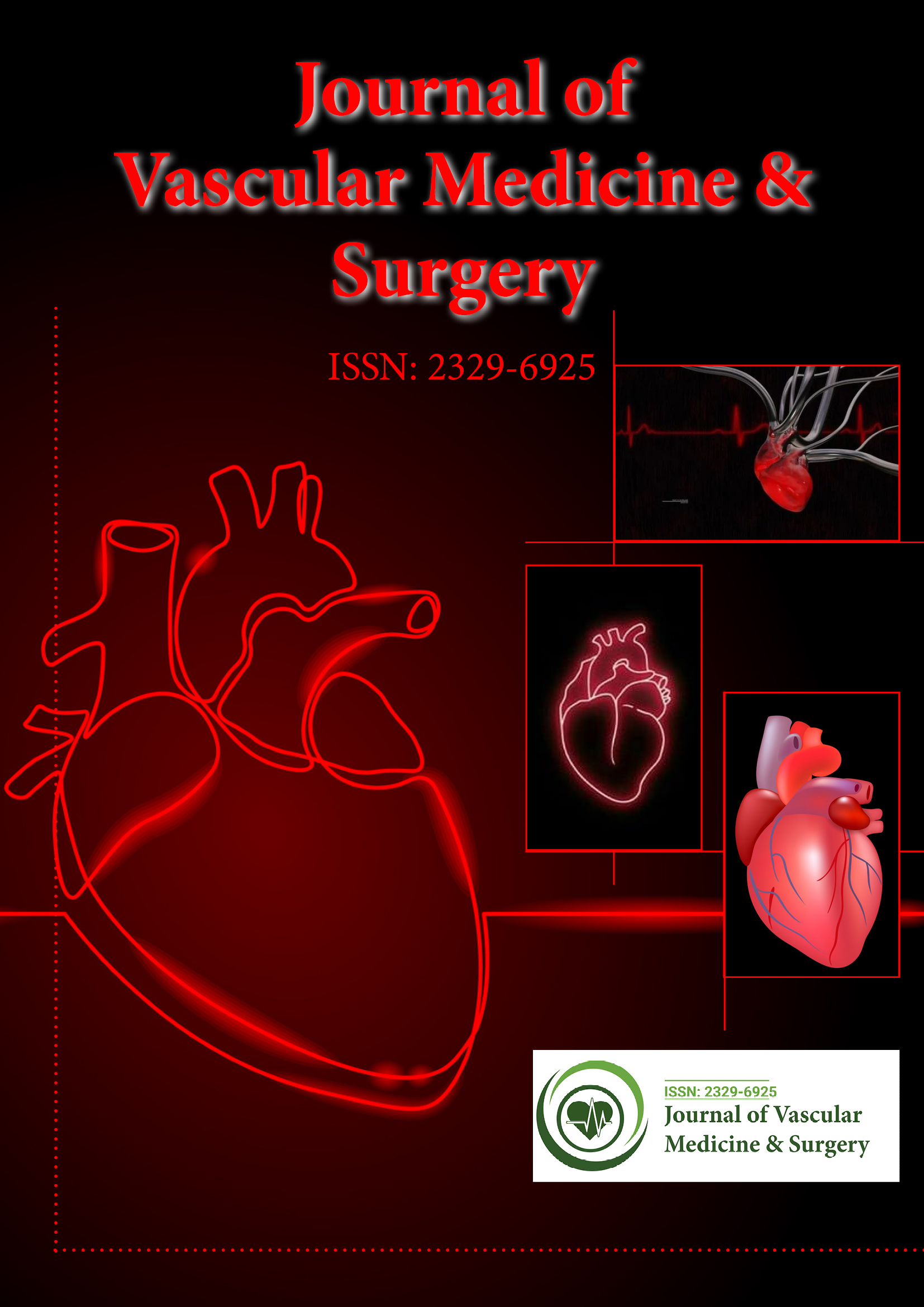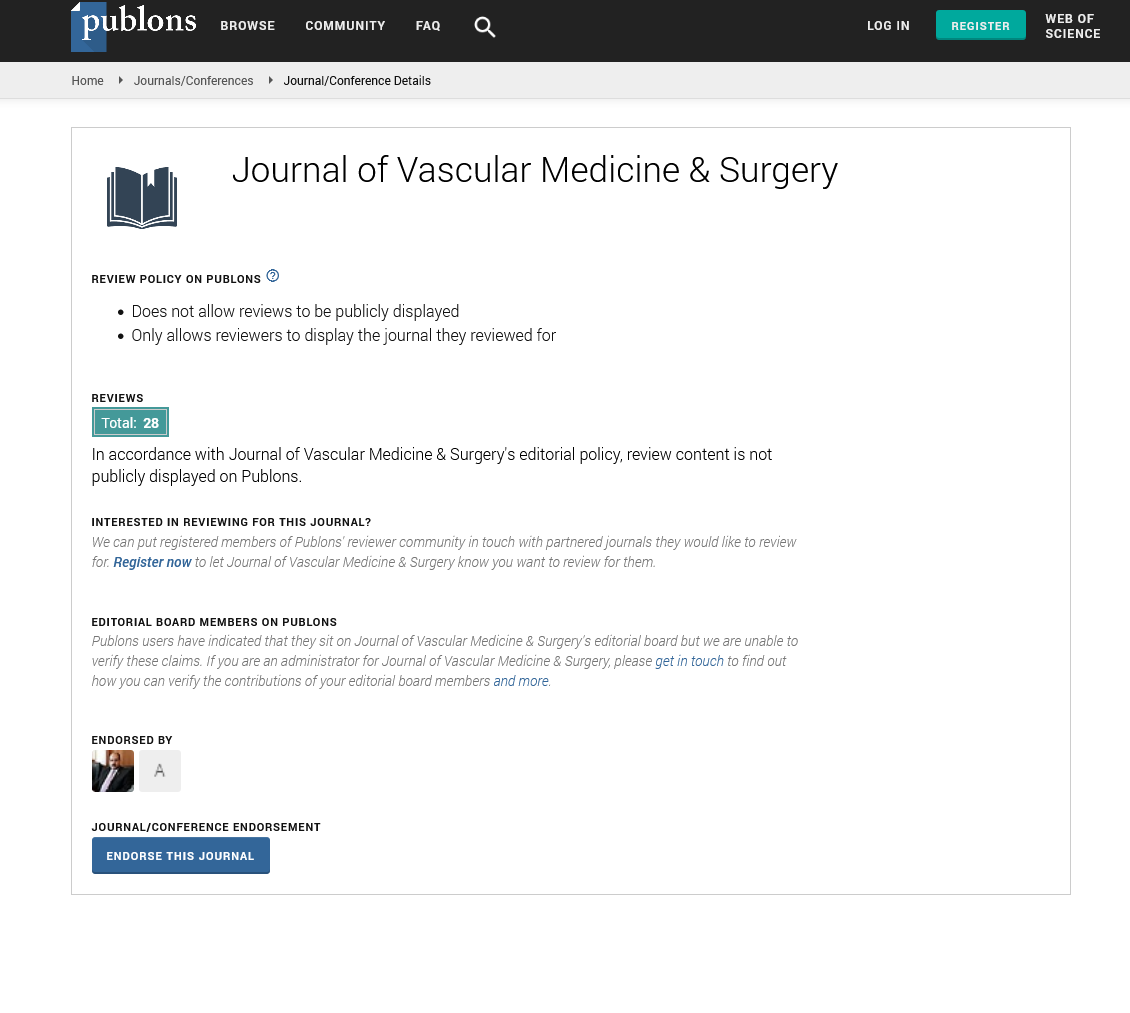Indexed In
- Open J Gate
- Academic Keys
- RefSeek
- Hamdard University
- EBSCO A-Z
- OCLC- WorldCat
- Publons
- Euro Pub
- Google Scholar
- SHERPA ROMEO
Useful Links
Share This Page
Journal Flyer

Open Access Journals
- Agri and Aquaculture
- Biochemistry
- Bioinformatics & Systems Biology
- Business & Management
- Chemistry
- Clinical Sciences
- Engineering
- Food & Nutrition
- General Science
- Genetics & Molecular Biology
- Immunology & Microbiology
- Medical Sciences
- Neuroscience & Psychology
- Nursing & Health Care
- Pharmaceutical Sciences
Opinion Article - (2022) Volume 10, Issue 4
COVID-19 Vascular Destruction Caused by Endothelial and Denitrification Development
George Adamson*Received: 07-Apr-2022, Manuscript No. JVMS-22-16625; Editor assigned: 11-Apr-2022, Pre QC No. JVMS-22-16625(PQ); Reviewed: 25-Apr-2022, QC No. JVMS-22-16625; Revised: 01-May-2022, Manuscript No. JVMS-22-16625(R); Published: 09-May-2022, DOI: 10.35248/ 2329-6925.22.10.455
Description
The severe Coronavirus disease 2019 (COVID–19) epidemic was declared a Public Health Emergency of International Concern by the World Health Organization (WHO) in January 2020. The novel coronavirus, Severe Acute Respiratory Syndrome Coronavirus–2 (SARS–CoV–2), has caused several hundred thousand deaths globally due to its fast spread. Fever, dry cough, asthenia, headache, myalgia, anosmia, diarrhea, and a growing number of skin symptoms are all common COVID–19 clinical signs. Respiratory dysfunction and widespread gastrointestinal bleeding are the most common symptoms in severe cases. SARSCoV– 2 post-mortem lung examination revealed inflammation, edema, and type II pneumocyte hyperplasia, although many patients exhibited a pro coagulant condition and/or acute hypoxemia with reasonably well-preserved lung mechanics. COVID–19 is a systemic multi-organ viral invasion with micro vascular damage and thrombosis, according to identified clinical patterns. However, new research suggests that anti-coagulated individuals are more likely to require invasive mechanical ventilation, which is linked with a poor outcome. The mechanisms underlying the COVID–19 effect on vascular and surrounding tissue are unknown. Histological data is currently scarce and mostly restricted to post-mortem examination. There have been very few investigations in COVID–19 patients' biological tissue. Skin COVID–19 lesions might give a lot of information because SARS-CoV–2 mostly affects cutaneous tissue. A skin biopsy might be a simple and convenient way to investigate the pathophysiologic pathways in COVID–19 patient’s live tissue. Clinical and histological descriptions of skin expressions on COVID–19 patients might yield useful information.
Patients with COVID–19 are thought to be suffering from a microvascular process that involves vascular wall cell damage. Coronavirus enters cells through the Angiotensin Converting Enzyme 2 (ACE2) endothelium receptor. According to the findings, this phenomenon may result in a vasculopathic response pattern characterized by regenerative proliferation of both vascular endothelial cells and vascular myointimal cells. Furthermore, significant deposits of the complement complex C4d as well as C3 were seen, which may have contributed to the vascular wall alteration. Injury to micro vascular endothelial cells might trigger the clotting cascade. Thromboembolic events have been reported in COVID–19 patients. Anticoagulation therapy is administered on all of these individuals. Anticoagulation, on the other hand, has been linked to a higher overall severity of sickness in recent research. According to the findings, anticoagulation alone could not entirely restore arterial lumen obliteration, resulting in increased hemorrhagic risk.
The most effective stimulating agent for angiogenesis and vascular permeability is Vascular Endothelial Growth Factor (VEGF). This, together with complement activation, might play a key role in generating and sustaining the COVID–19 vasculopathic response pattern. These findings may aid in the development of particular medication for COVID–19 severe patients. Pathophysiological processes at the endothelium level have been proposed and classified as pro-coagulant, proinflammatory, anti-fibrinolysis, poor barrier function, vasoconstrictor, and pro-oxidant. The pro-coagulant and proinflammatory pathways have been investigated thus far, and dexamethasone and anticoagulants have become common treatments for the condition. For evidence, a recent metaanalysis evaluating the role of statins in COVID-19 patients was recently published, with preliminary findings suggesting a 30 percent reduction in fatal or severe disease and discrediting the suggestion of harm, highlighting the need for a well-designed randomised controlled trial to confirm the role of statins in COVID-19 patients. COVID–19 may cause a micro vascular damage characterised by rapid endothelial and myointimal development in the presence of complement activation. In COVID-19, this process, in combination with the increased vascular permeability, might lead to obliteration of the vascular lumen and bleeding. As a result, activation of the complement and angiogenic pathways may play a key role in initiating and sustaining this vasculopathic response pattern.
Citation: Adamson G (2022) COVID-19 Vascular Destruction Caused by Endothelial and Denitrification Development. J Vasc Surg. 10:455.
Copyright: © 2022 Adamson G. This is an open access article distributed under the terms of the Creative Commons Attribution License, which permits unrestricted use, distribution, and reproduction in any medium, provided the original author and source are credited.

